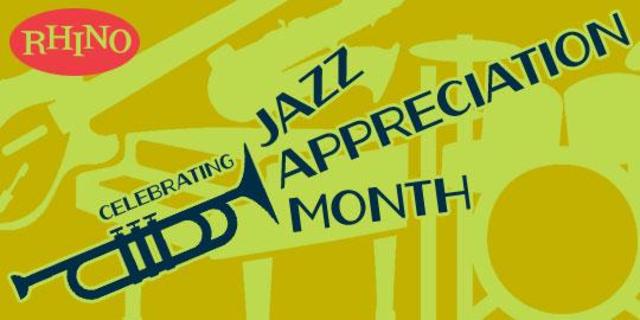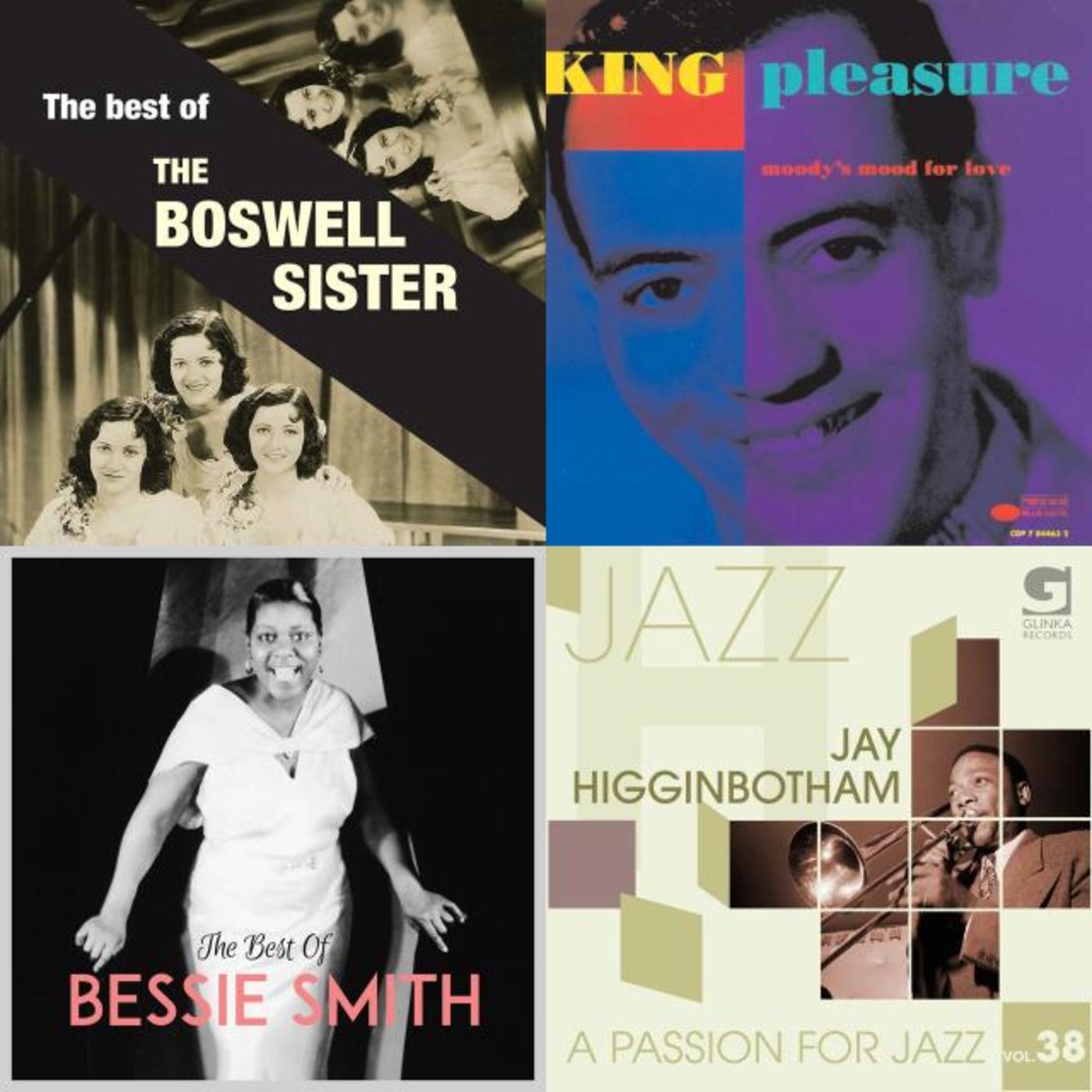Jazz Appreciation Month - "The Jazz Singer"

As we wrap up Jazz Appreciation Month here at Rhino, we focus on what might be the greatest instrument of all: the human voice.
Al Jolson may have been the first jazz singer in the movies, but Louis Armstrong preceded him in real life. A peerless trumpeter, “Satchmo” was also a pioneering vocalist, introducing scat singing to the jazz lexicon. Like Jolson or Cab Calloway, Armstrong was a magnetic personality, and his razzle-dazzle showmanship shaped public perception of jazz performance for years to follow.
Ella Fitzgerald also helped shape the mold from which jazz singers are cast. Originally inspired by such artists as Armstrong and The Boswell Sisters, Fitzgerald launched her career with big band leader Chick Webb during the swing era, and after WWII adapted her style to bebop and became a masterful scat vocalist. She's often called “The First Lady of Song,” and Ella arguably reached her peak interpreting the Broadway and pop output of such composers as Cole Porter, Duke Ellington and George & Ira Gershwin on her beloved “Songbook” albums for the Verve label. Over the course of nearly six decades in music, Ella Fitzgerald earned 13 Grammy Awards and medals from two U.S. Presidents, and versatility and class were her hallmarks all along.
The big bands also gave us Sarah Vaughan and Dinah Washington. Newark, NJ native Vaughan was performing at Harlem’s famed Apollo Theater (opening for Fitzgerald, in fact), when bandleader Earl Hines picked her to sing for his orchestra; after the war, Sarah recorded solo for Columbia and Mercury, frequently finding success on the pop charts. Dinah Washington sang with Lionel Hampton’s band in the 1940s before going solo; in addition to jazz and pop hits, Washington was popular with R&B fans, and would be inducted into the Rock and Roll Hall of Fame as an “early influence” in 1993.
If there is such a thing as an archetypal jazz singer, it is probably Billie Holiday. Holiday was “discovered” in the 1930s by noted producer John Hammond, who got the singer a record deal with Brunswick, where she connected with pianist Teddy Wilson and saxophonist Lester Young, who would accompany “Lady Day” on some of her greatest sides. Billie Holiday had a difficult childhood, endured more than her share of racial abuse - “Strange Fruit,” one of her most famous recordings, is about lynching - and struggled for years with drug abuse. As remarkable as her talent was (critic Robert Christgau once said she was “possibly the greatest singer of the century”), her legend owes as much to her troubles – she’s the Marilyn Monroe of jazz singers.
Holiday could sing upbeat numbers, but she is better known as a torch singer. “Carrying a torch” for someone is an expression of longing, and the lush romanticism of this style of jazz has attracted many fine vocalists through the years. A very successful songwriter as well as a singer, Peggy Lee made “Fever” a classic, and though best known as an actress, Julie London’s singing career produced a definitive torch song in “Cry Me A River.” Chris Connor’s ‘50s and ‘60s recordings benefit from some of the top jazz producers and accompanists of the day, and her Atlantic labelmate Mabel Mercer could also sooth broken hearts effectively. And as more recent stars like Norah Jones, Diana Krall and k.d. Lang (who added a little twang to her torch) demonstrate, this is a branch of jazz singing that remains evergreen.
Women have no monopoly on torch songs, though when the guys sing them, they're more often called “crooners.” At the summit of this music stands Frank Sinatra. When he didn't have the world on a string, Ol' Blue Eyes could get pretty melancholy, and with such albums as In The Wee Small Hours and September Of My Years, Sinatra touched upon the rueful reflection that's at the heart of the torch song. Both Tony Bennett and Mel Tormé trod similar ground, Tormé's work venturing a bit further into jazz with the occasional scat vocal. With a voice that has often been mistaken for female, Jimmy Scott is in a class by himself voicing romantic hurts and hopes. Cabaret singers (think Bobby Short or Michael Feinstein) are first cousins to torch singers. And as with the women, there's a current hitmaker working this territory – Michael Bublé.
Not all vocal jazz is as pensive as a torch song. Some of it can be quite playful. Case in point: the '50s trio Lambert, Hendricks and Ross, who could get lovably quirky on such tracks as “Twisted.” The Manhattan Transfer brought some of that same spirit to their hits in the '70s and '80s. Al Jarreau's brand of jazz singing is usually pretty sunny, and Bobby McFerrin's way-out vocalizing can make any listener stop worrying and be happy. Somewhere up there, that old scat singer Louis Armstrong is smiling...
Torch singers, crooners and syncopated stylists have all seen success on the pop charts, testament to the fluid relationship between jazz and other genres. Ties to R&B are particularly strong, from Lena Horne in the 1940s to Nina Simone and Roberta Flack in the '60s and '70s. Anita Baker's breakthrough success with Rapture owes much to the singer's skillful jazz phrasing. And while Natalie Cole scored some early hits in a contemporary R&B vein, it was her return to the standards on Unforgettable that made her a superstar (it's in the genes; Natalie's father Nat “King” Cole was himself one of the great jazz vocalists).
Rock, too, has borrowed freely from jazz's vocal techniques – and its persona. The most famous example of this is probably Joni Mitchell, who can be heard channeling chain-smoking hipsters on several releases (one of which was a collaboration with jazz legend Charles Mingus). Rickie Lee Jones made a name for herself with the beatnik cool of “Chuck E.'s In Love” and has peppered her concerts and albums with jazz standards ever since.
The unexpected shifts in tempo and melody that characterize jazz vocals can enliven virtually any type of music – which is why you should always keep your ears turned to “the jazz singer”...

